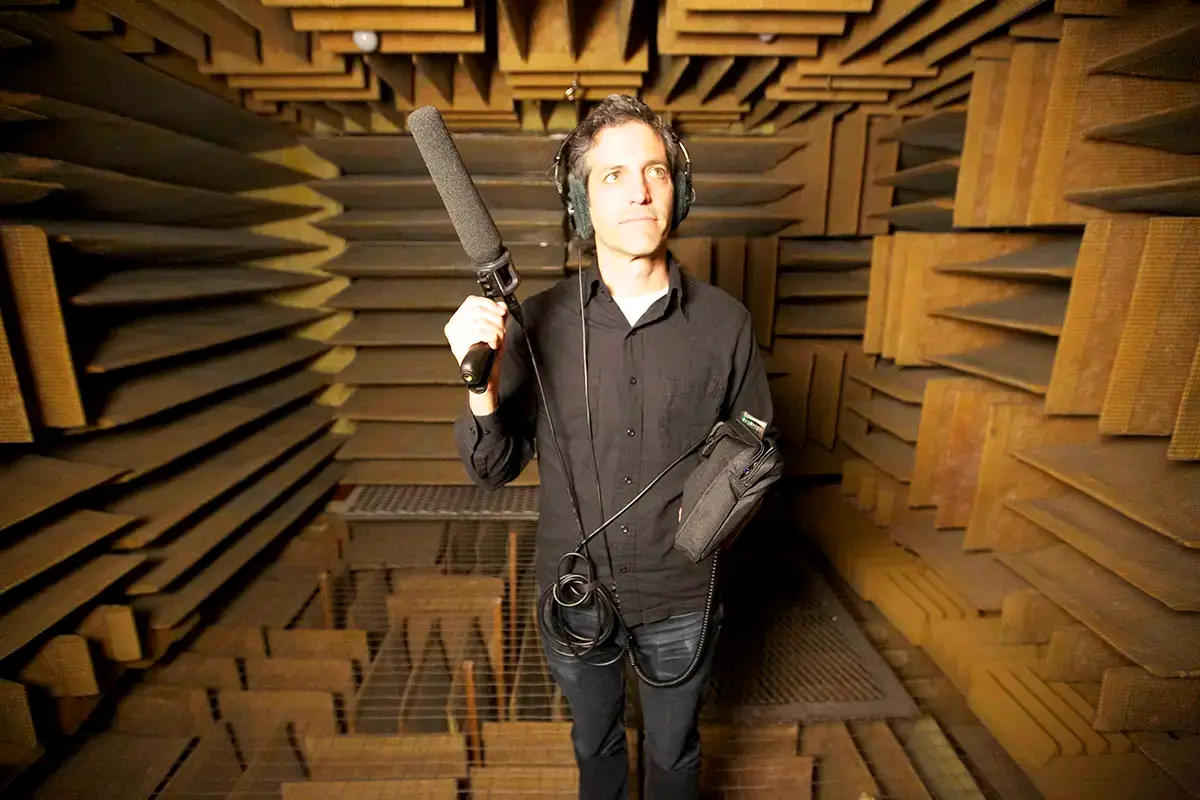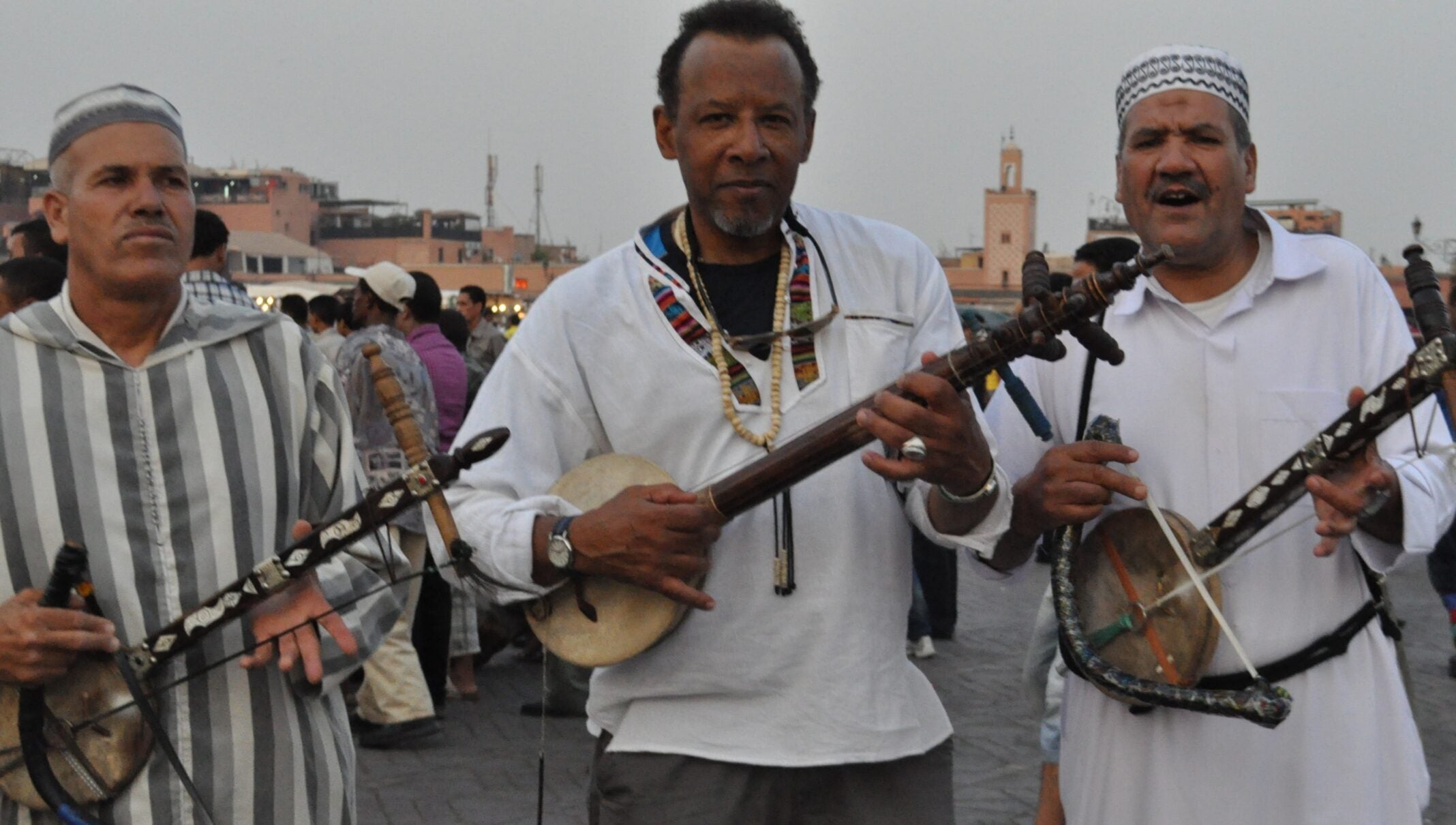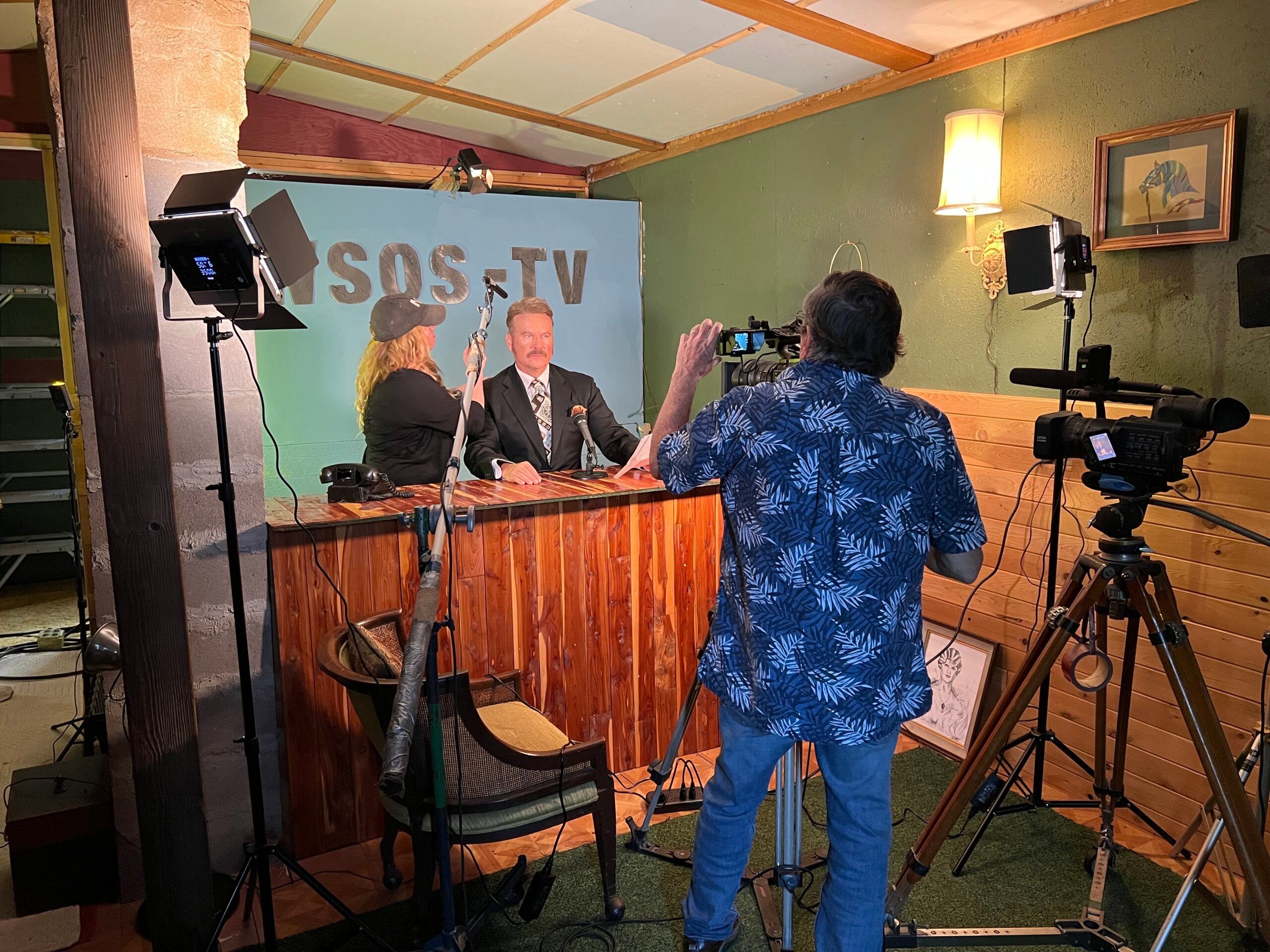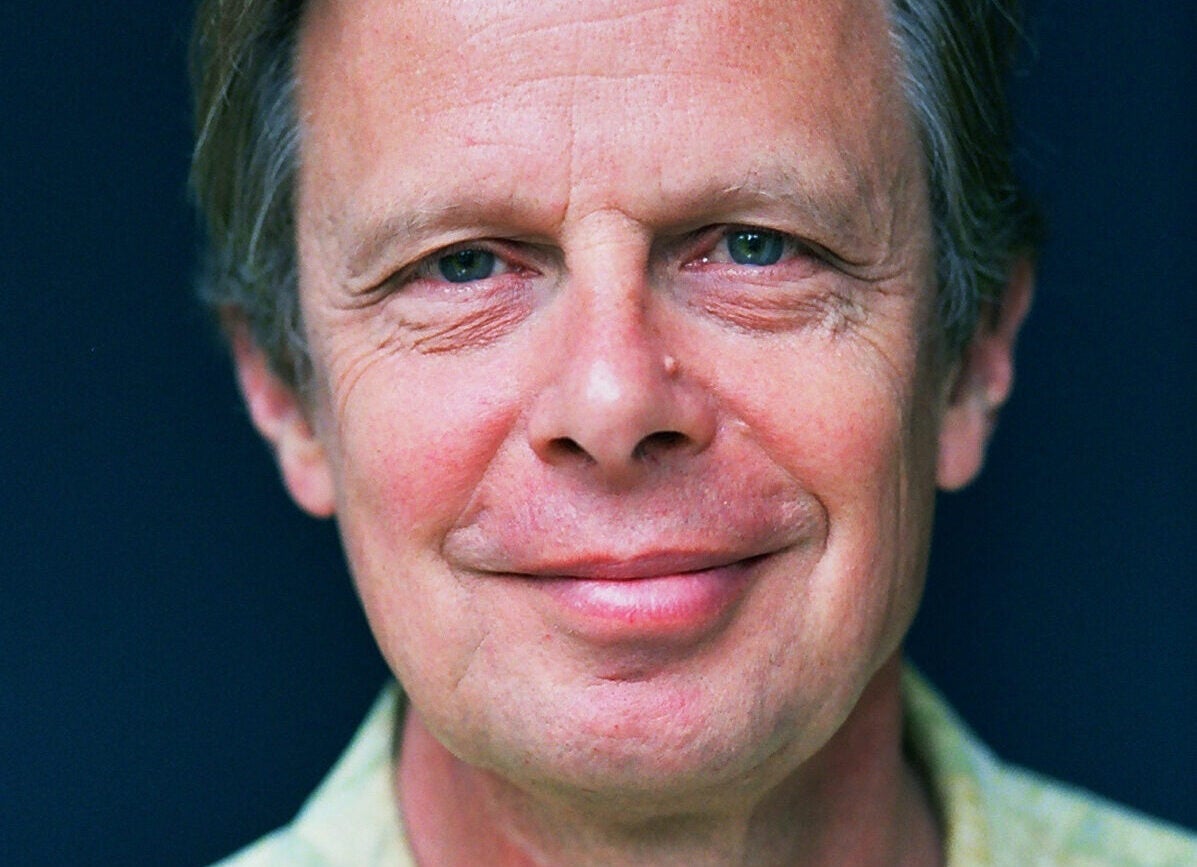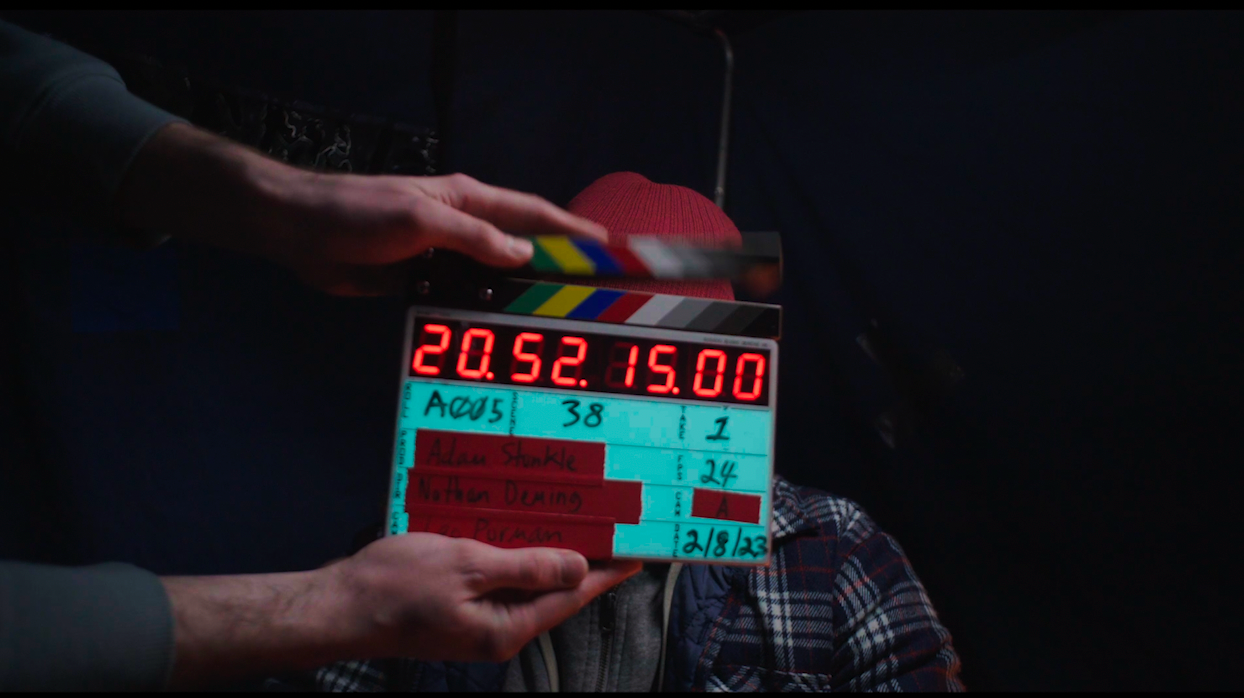As radio people, we at WPR’s “BETA” are always thinking about how the world sounds.
When we heard about Sam Green‘s new documentary film, “32 Sounds,” we wanted to hear what he had to say about how we listen.
The film exists in three different forms, according to its website. There’s a live performance, an at-home experience and a theatrical version at select theatres.
News with a little more humanity
WPR’s “Wisconsin Today” newsletter keeps you connected to the state you love without feeling overwhelmed. No paywall. No agenda. No corporate filter.
This interview has been edited for brevity and clarity.
Steve Gotcher: Did you have a specific plan for the direction of this documentary, or did it develop over time?
Sam Green: I was stuck at home like everybody else when the pandemic happened. I had my stack of books about sound and I started reading them. I read some references to Annea Lockwood, whom I had never heard of before. It mentioned that she’d recorded the sound of rivers for 50 years, and I was intrigued. Who recorded the sound of rivers for 50 years? Because I love the sound of rivers. I started Googling Annea Lockwood.
If you haven’t seen “32 Sounds,” she’s an avant-garde composer and ended up being the central character in the film. I found a lot of her work online and got very taken with it, and I just sent her an email saying, “I’m learning about sound. Could I talk to you sometime?” And she said, “Yeah, call me this afternoon.”
In the movie, she’s delightful, sunny, enthusiastic and wise. And that’s what she is in real life. We started talking every week because she was so intelligent about sound and life. In a way, the movie came out of that. I spoke to her a lot.
Gotcher: In one of the scenes with her, she says, “There’s something I started writing about a year ago: listening with as opposed to listening to.” What did you think when you heard those words?
Green: It’s a semantic but also a conceptual difference in how you think about the world. She said that the bugs, birds, fish and all the beings are out there, and sound is just a vibrational exchange between all these things. And if you’re on your porch listening to all the sounds at night, “listening to” it isn’t accurate. It’s like thousands of years ago when people thought all the planets revolved around the Earth, and then they realized, no, we’re just one of many things out there.
So listening with acknowledges that the bugs and the birds and the fish and the crickets are all also listening. And it’s an exchange and a universe of vibrations; you’re one part of that. And so that I just was very taken with because, again, it’s a tiny semantic thing, but it’s also a way in which you see the world. And the difference is enormous.
Gotcher: One of the things you say in the film is using sound to understand something about the odd experience of being alive. Tell me about how you think you accomplished that goal.
Green: If you have a painting in your room and you go out for the day and come back, the painting is still there. Visual stuff: There’s stability and knowability to it. But sound is always elusive and always ephemeral.
If I clap, you know it’s gone. Our conversation is just in the air, and then it’s gone. Even if you record it and somebody watches it later, it’s still only in the air and gone. Then, you know, you can play it repeatedly, but sound only exists in the moment. It’s ephemeral. And in that sense, it’s mysterious.
It’s hard to understand how it works, but in some ways, it’s closest to our own experience of life, of all sorts of sensory phenomena. I like that. It’s interesting. In some ways, thinking about sound helps us understand our world experience because we are ephemeral, and our knowledge of the world is fleeting and only in the moment.
Gotcher: You say using music in a film is tricky when doing a film about sound. Why is that?
Green: It was a challenge to use as little music as I could but still have it do a lot of work, and the music is pretty low in the mix. It’s small music. There’s a scene about room tone that’s just different people in interviews, sitting quietly. The only sound is just the sounds of the rooms they’re in, a slight hum of traffic outside, a very small sound. There’s music in that scene, so the music can’t be so loud that you don’t hear the sounds of the rooms. It has to sit under the room tone, which is pretty small. So the music has this very little range. But that music gives the scene a poignancy, a certain valence it wouldn’t have otherwise. You feel certain things from it.
I’ve noticed if you say, “Sit still for 30 seconds. I’m just going to record the room,” suddenly they’re not self-conscious about their face anymore. Usually, when you’re filming somebody, they have a certain sense that they have to be “on.” And now, suddenly, there’s this moment where they can sit there. As a filmmaker, you never use the images of it, ever. But I’ve always noticed it looks cool. The person is thinking about something else. Suddenly, their face gets interesting. It’s just a weird moment. An odd moment. This was an excellent opportunity to use the best room tones I’ve done over the years.
Gotcher: There’s a scene in the film where an artist in Lebanon is recording an experimental piece, and then bombs explode nearby. Can you talk about this section and why you included it?
Green: I read about this experimental musician named Mazen Kerbaj, and he recorded himself playing a tricked-out trumpet. He had lived in Beirut. And in 2006, there was one of the many wars between Hezbollah and Israel, and Israel was bombing Beirut. He recorded himself playing trumpet on his balcony while bombs were falling every 10, 20 or 30 seconds. He described it as a duet between himself and the Israeli Air Force.
It’s a very striking recording. I tracked it down, heard it and thought, “Wow, this is amazing. It’s beautiful, odd, awesome, terrible, tragic and painful.”
You know, there are a lot of different things in war. That section is crucial because it’s, in some ways, about politics and war and all that that entails. And I made the film obviously before what happened in Gaza, but it has taken on a different valence because of that.
Gotcher: Has the making of this film changed the way you think of sound in the world?
Green: One-hundred percent. I am a different person, and much of it came from my conversations with Annea Lockwood.
Most people don’t pay much attention to sound. They might listen to music and have a good experience with that. They never really open their ears and listen to things in an active way or listen to the world. You have to close your ears off for much of your time awake because there’s too much sound, and most people get into a defensive posture where their ears are always closed. But they need to remember to listen.
People asked composer John Cage what his favorite sound was, and he always said it was the sound of traffic outside my window on Sixth Avenue. And, you know, it was probably half flip, but I don’t think it was entirely flip. Sounds that most people think of as nothing sounds — boring sounds can be hugely pleasurable. The sound of birds or a plane and traffic over on the BQE half a mile away. All that can be a great pleasure.
Also, for me, sound is a way to bring myself back to the present. Annea Lockwood’s listening with as opposed to listening to. We’ve already remarked on it as a simple semantic thing. It’s a difference in worldview, but listening with versus listening to that worldview has profound political, social and environmental implications. And it’s a huge thing. Opening your ears is good for people in general. And good for the world.

